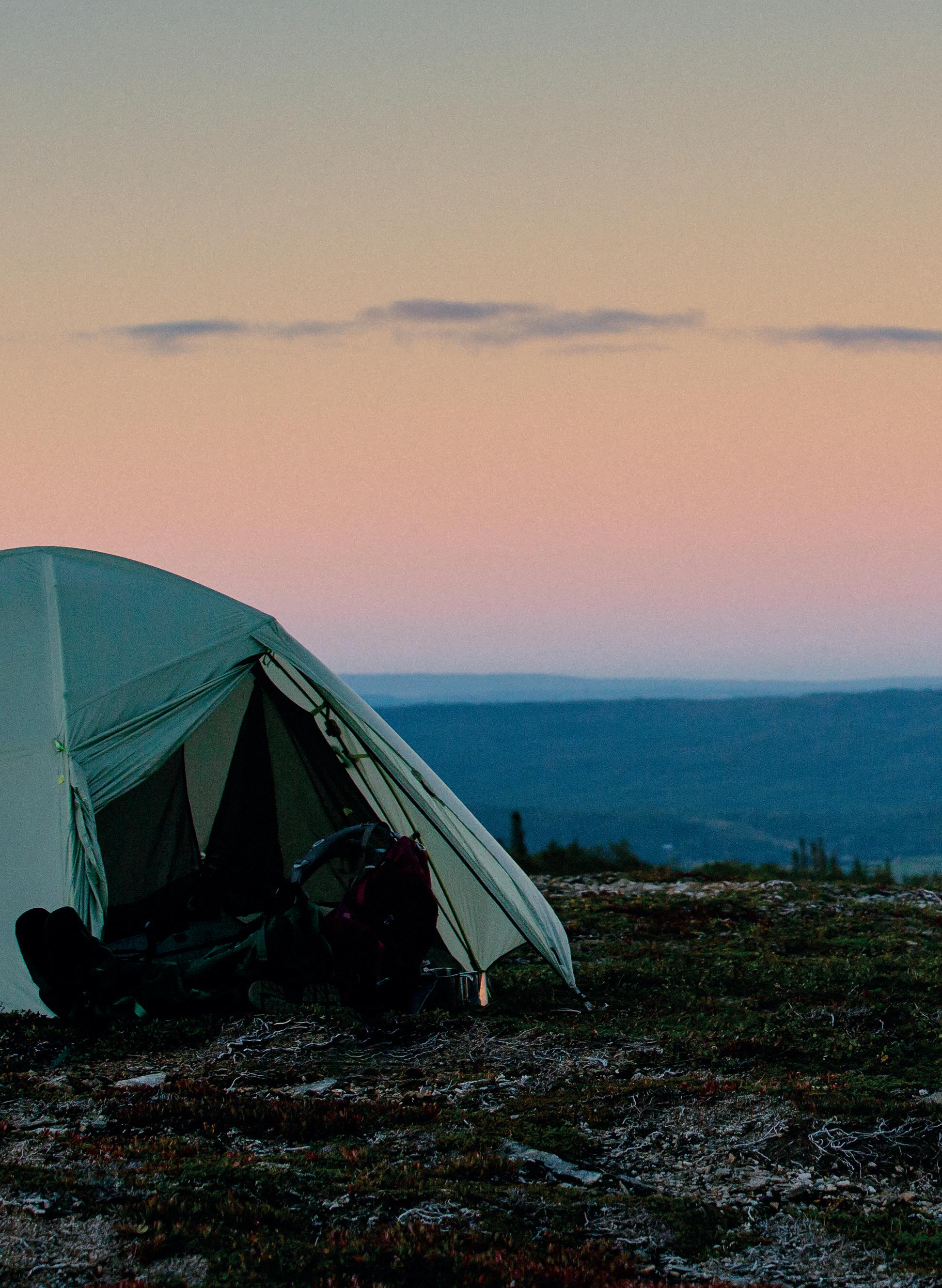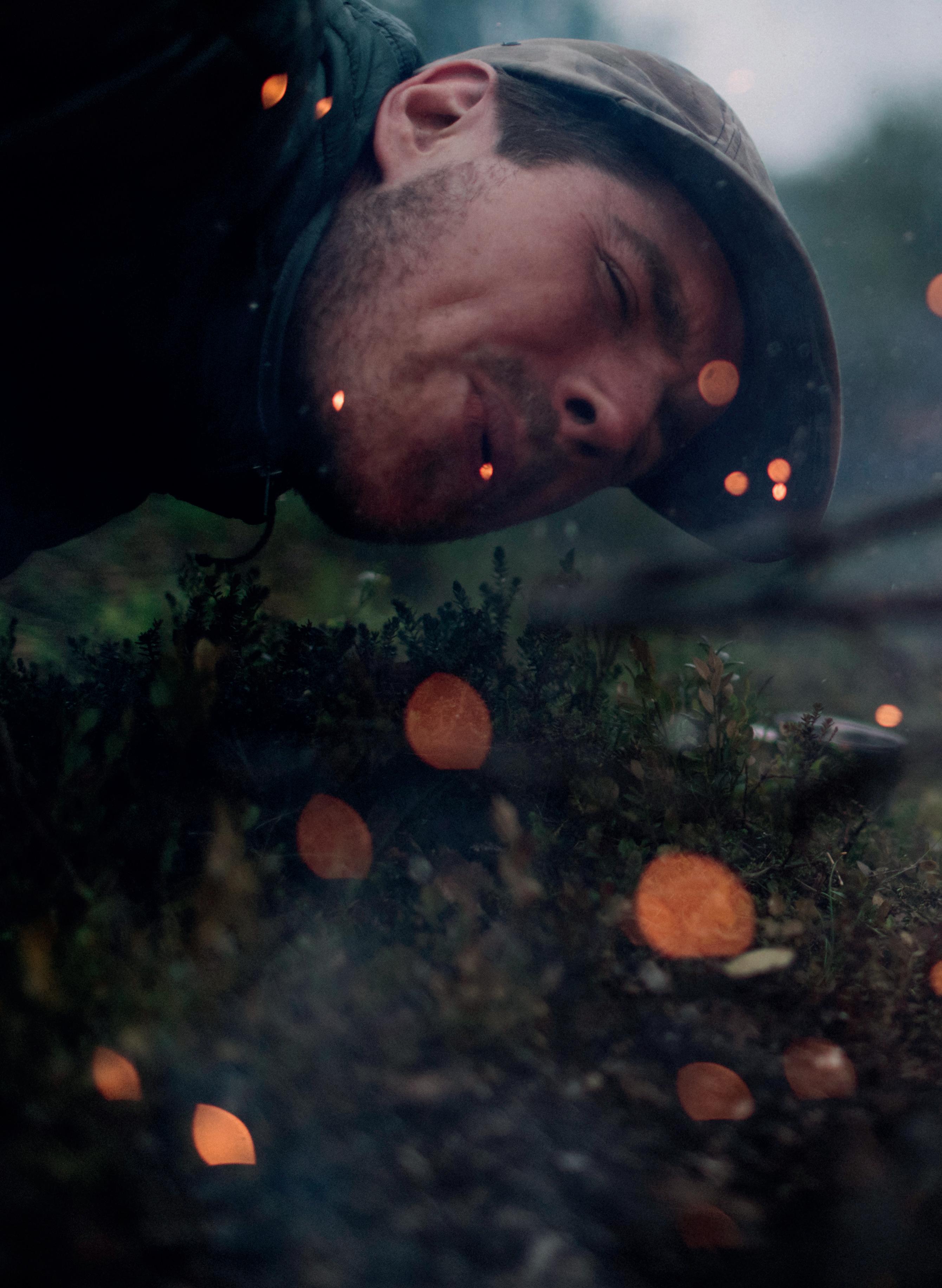
6 minute read
Firestarter
We teach you the ABCs of fire starting
Text: Olof Lange / Photo: Sofia Sjöberg & Erik Nylander
Advertisement
Long after you’ve put your boots away, the scent of smoke still lingers on your clothes, bringing back memories of evenings around the campfire, gazing into the flickering embers, just as our ancestors did thousands of years ago.
In many ways, fire made us civilised. Mastering fire gave us light, warmth and protection against predators. Cooking food increases the calories gained from food and reduces digestive load. This gave our ancestors more energy to spend on other tasks and meant they had to spend less time foraging.
Fire is still important to us, not least when we’re in the great outdoors. But how does fire really work, and what skills do we need to light one – and keep it alive?
Fuel,heatandoxygen
Combustion depends on fuel, heat and oxygen, and, like a tripod, fire won’t work without all three legs. Only with the right balance of these three, will the fire be sufficiently intense.
We start combustion by adding heat, but a single twig won’t keep burning long as heat quickly dissipates. Sticks bundled close together heat each other as they burn, continuing the chain reaction.
The heat breaks down the big molecules that make up the wood into combustible gases, which burn, with some carbon and ash being left behind.
Oxygen is vital to the combustion process. Hot smoke rises, and fresh air is sucked in, but we often need to blow in some extra air to get a fire going.
Preparation
If you camp at a popular campsite, there’s a good chance all the nearby branches have already been collected, so gather branches along the trail as you walk. This way, you can light your fire as soon as you arrive. Branches you find on the ground and those with bark are often moist or rotten. Look for dead branches still attached to trees and without bark, if possible. Branches that snap sharply make good firewood. Even if a branch looks wet, the wood is often dryer inside. You can usually find dry twigs close to the trunks of pine trees.
Prepare the fireplace and make sure the fire can’t spread. Remove any nearby flammable material and check how damp the soil is. If the area has been dry for a while or is prone to droughts, there can be dry roots or peat under the soil that can catch fire even if the topsoil is damp. Even if you think you‘ve put the fire out, these roots and underground elements can smoulder and burst into flame long after you’ve left, so you must make sure you fully extinguish any fire you make.

Whatrulesapplyinthewild?
The right of public access in Sweden forbids you to cut down living trees and bushes or make use of wind-felled trees for firewood, as they have an essential role in the eco-system. Never make a fire directly on solid rock – it’ll crack and never be whole again.
National parks and nature reserves have special rules regarding fires. Counties and municipalities have information about local regulations and possible fire bans.
Kindle
Start small and dry, then build up the fire with bigger sticks as flames grow. You can use damp sticks and logs as they’ll dry out as they’re used. The most common pitfalls are running out of kindling (it burns very quickly) as you start a fire or putting on too many larger sticks at once and smothering the fire.
Neither birch bark nor fatwood (resinous pine kindling) are necessary for starting a fire, but they help, especially in poor conditions.
Usingafiresteel
A fire-steel is long lasting and works in all temperatures, even if wet. It requires some experience to master, so take every opportunity to practice. The steel sparks are over 3000°C but need tinder that catches them and bursts into flame. The outermost layer of birch bark or fine scrapings of fatwood is perfect. Rosebay, willowherb and reed plume are also commonly used.
Support the tip of the steel and strike downward along the steel with the back of your knife. The sparks will fly downwards toward the tinder.
Burning
The wind can keep a fire going – or be a problem when it’s too strong. A pit in sand or snow protects your fire from the wind but can also deprive it of oxygen, so you can fix this with an air channel.
Kindling needs space to burn well but thicker branches can lay closer together. It’s possible to burn damp or even wet wood with some care and a lot of heat, which will burn slower.
The ‘log cabin’ technique
Building a fire up like a log cabin is a good strategy. Stack the fuel in a stable square shape; this is excellent for cooking. The logs and branches also give the first flickering flames some shelter from the wind.

- Start with two thicker branches as a base. - Lay down the next layer perpendicularly, at the ends of the base, creating a square. - Continue stacking upward, with the branches getting smaller as you go. It should end up looking a bit like a Mayan pyramid! - Light the fire at the top, and the fire will burn down. This will give you a long-lasting and maintenance-free fire with little smoke.
or
- Build the fire around the kindling so it burns outward, drying out any moist wood as it goes.
Why does it smoke?
A perfect fire leaves only carbon dioxide (which is invisible) and steam. But most campfires aren’t perfect; the smoke that appears is a mix of unburned gases and particles like tar and soot. Many of them are poisonous and will hurt your lungs and eyes.
How can you avoid smoke?
First and foremost, you can get out of the way and try to improve the fire. Are the sticks too close together without oxygen, or too far apart and not heating each other? Have you put on too much wet wood at once? Stack moist wood around the fire to warm it up and dry it out first, and don’t put on new wood before the old wood is fully alight; this way, you’ll avoid lots of smoke.
If you have an emergency and want to attract attention, add wet leaves and fresh grass to make your fire extra smoky.
Aluxuryfire
With a fire crackling away, it doesn’t matter if you’re alone on a desert island or camping with your family close to town. When you don’t need a fire, it becomes a luxury, something you make because you enjoy it, not because you need it to survive. Having a campfire makes your camp a bit more cosy, is perfect for cooking some marshmallows or swapping some scary ghost stories! For many people, a campfire is synonymous with the outdoor life – not only do we long for nature, but we also long to sit around a fire.











